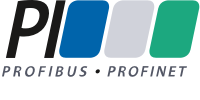Project
Advanced Integration Technology (AIT), a 20-year-old supplier of turnkey industrial automation systems for the leading aerospace suppliers, made major strides in machine safety. As a prime contractor on the Boeing 787 Dreamliner, AIT had responsibility for the final assembly and body join functions, charged with delivering a fully automated positioning and joining system. A comprehensive safety scheme with Safety PLCs is a central element in the system, which communicate using PROFINET. To help plant operators and safety engineers comply with the requirements of IEC 62061 and ISO 13849-1 standards, a TÜV certified online Safety Evaluation Tool (SET) was also available.
Solution
Integrating control and safety requires a holistic safety mindset built around Safety Lifecycle Management, as specified by major safety standards such as IEC 61508, IEC 62061and ISO 13849. This is a systematic, phased approach to safety with steps that are well documented and verified, from initial hazard and risk analysis to safety system implementation all the way through to system decommissioning.
The steps are:
• Design and engineering, including risk assessments and identification and definition of safety functions needed for a safe manufacturing process
• Installation and commissioning, including testing of safety functions and training personnel in for safety
• Operation and servicing, including access to documentation and spare parts for keeping machines functioning safely, periodically testing of operations and fast diagnosis of faults
• Maintenance, including the inspection and regular replacement of safety-relevant components; and
• Modernization and upgrading, including the implementation of functional safety advancements as a machine’s safety design and engineering allows.Alignment and Positioning
Two complete assembly systems and one positioning system were provided. The three main sections of the fuselage are joined using 14 positioners mounted to transport structures that move either independently or interlocked and indexed to the factory floor for stability. Real-time positioning measurement data are logged with an integrated indoor GPS. AIT designed the alignment and positioning systems that roll under the aircraft dollies, radically reducing auxiliary equipment needs, materials handling requirements, and additional positioning steps.
Onsite at Boeing, the 14 positioning system components were moved into their respective locations near the cradle dollies. Once the system is rigidly joined, a measurement system onboard locates the airplane sections. This information is fed to the system’s software application. From those data points, the system calculates how much each section (nose, tail, left and right wings) needed to move to ensure an exact fit to the adjoining section. This precise alignment ensures a smooth, rapid build of each fuselage.
Siemens was tapped to provide equipment for AIT. “We looked for a supplier with an off-the-shelf selection of automation and motion control solutions, who could offer us global support,” says Ed Chalupa, AIT’s president. “Our goal was to utilize all current software, integrated safety, and control technology advancements. Both Boeing and AIT were keenly sensitive to lifecycle security issues in this critical area of the project.”
Employing PROFINET
AIT designed the overall layout of the control architecture, programmed the Motion Control system with the PLC, distributed the I/O, and integrated safety, plus provided support on the Boeing internal structure and lifecycle support requirements. The basic scheme of the motion control system comprises: a motion controller, a Windows-based HMI, the Safety PLC, plus fail-safe and standard I/O modules (linked via PROFIsafe), all running on a PROFINET network. This basic architecture was then multiplied by the number of control nodes for each specific operational system in the overall production line being designed by AIT.
With the addition of a few PROFINET cables and mode selections, the final body-join assembly tool runs as a single entity. Running together in this configuration, the safety devices work coherently, providing proper response levels to all Emergency-stop situations. Each unit motion controller receives commands to perform uniform group movements with the tool as a whole via network communications from the HMI.
The integrated safety concept on this overall system is based upon three core principles: increasingly layered safety architectures, greater degrees of integration between the control and safety systems, plus more use of networking, especially PROFINET. In operation, these safety principles manifest themselves in the form of physical barriers and mechanical means such as walls, gates, door interlocks, and more. They all isolate personnel from danger.
Conclusion
With integrated safety and control, the project has a single system for standard and safe automation. Having one PROFINET network and one engineering system for both standard and safety technology, further reduces cost. As a collateral benefit, the software solutions allow easier replication of series machines.
Likewise, faster troubleshooting and extensive diagnostics onboard reduces downtimes, with faster restart after issue resolution. Functionally too, safety integration in the control system allows uniform user interfaces and data libraries, plus a reduction in the variety of control cabinets.
With advanced PLC and PROFINET networking technologies combined, the system safety for AIT and its customer is a production asset that protects the workers from harm and also ensures maximum availability and uptime. Reductions in initial capital expense and field operating expense are also realized.


